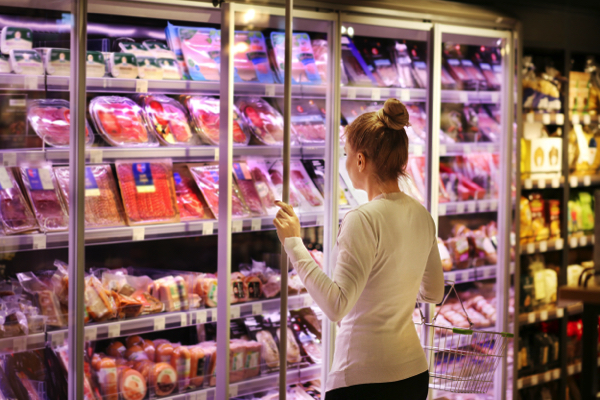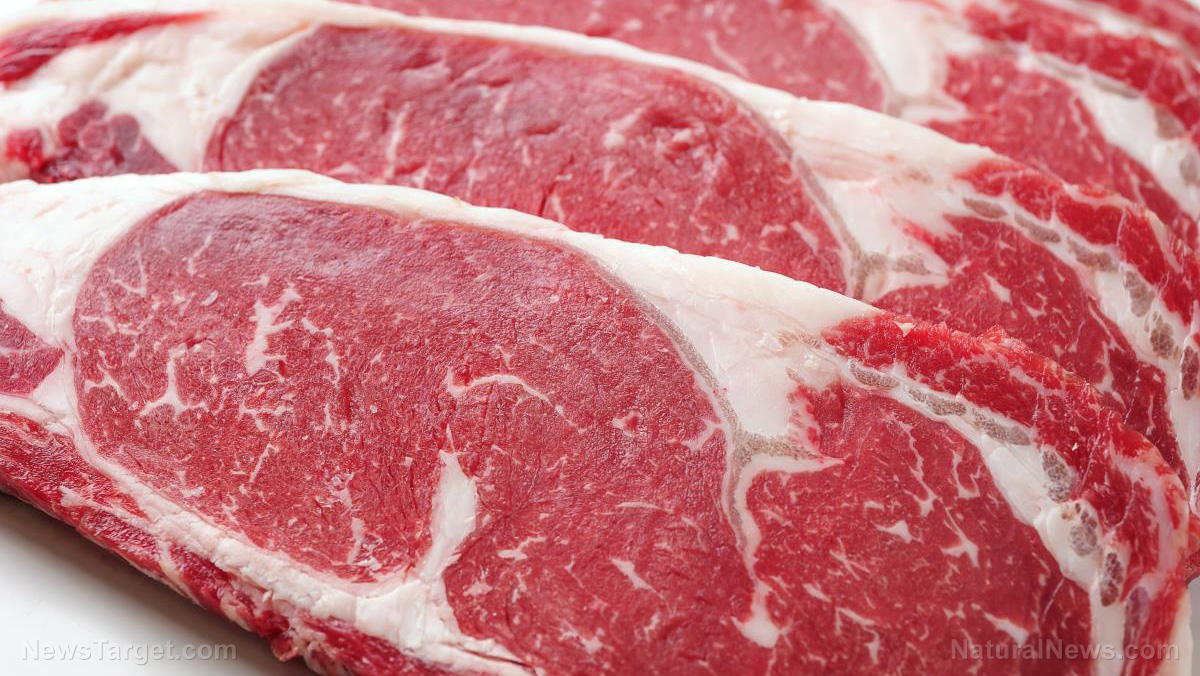Nearly 7 million pounds of ready-to-eat chicken and pork jerky RECALLED over metal contamination
10/31/2025 / By Olivia Cook

- America’s latest “High Class I” food recalls involve nearly seven million pounds of chicken and pork jerky after consumers found sharp metal shards inside.
- Even small shards can cause serious harm. The FDA says fragments as small as a few millimeters can choke, cut or puncture the digestive tract.
- The culprit is often the machinery itself. Conveyor belts, grinders, slicers and other industrial machine parts wear down, releasing slivers of steel into food without anyone noticing.
- Recalls are essential but reactive. By the time the news breaks, the contaminated food may already be in your freezer – or on your plate.
- Consumers are the final line of defense. Staying alert to recalls, checking lot numbers and reporting contamination can protect not just your family but countless others.
Massive back-to-back recalls from Hormel Foods Corporation and Golden Island have exposed an unsettling truth about modern food systems: Even with advanced safeguards, metal fragments are still finding their way into meals millions of Americans eat every day.
Hormel Foods recently pulled nearly five million pounds of frozen, ready-to-eat chicken after customers reported finding metallic pieces in their meals. The Daily Mail reported that investigators traced the contamination to a worn conveyor belt in the company’s Fire Braised chicken line.
Just a day before, South Dakota-based LSI Inc. announced a recall of over two million pounds of Golden Island Korean Barbecue Pork Jerky, sold at Costco and Sam’s Club. The Epoch Times cited U.S. Department of Agriculture (USDA) findings that wiry metal strands from a conveyor belt had made their way into the jerky.
Both incidents were classified as “High Class I” recalls – the government’s most urgent category, reserved for products that could cause “serious, adverse health consequences or death.”
No injuries were officially reported but food safety experts say that may be sheer luck.
The hidden dangers of metal in food
Swallowing a metal fragment isn’t like biting into a piece of gristle or cartilage in meat. Sharp shards can lacerate the mouth or throat and puncture the stomach or intestines, leading to internal bleeding or infection.
Even small pieces – well below the Food and Drug Administration‘s “unacceptable range of 0.3 to 1 inch (7-25 millimeters) – can be dangerous. Tiny pieces may chip teeth, lodge in airways or irritate tissue in the digestive tract. For infants, older adults and those with recent surgeries, the risks are especially high.
Experts note that metal fragments don’t have to be large to cause injury. The company adds that even small particles can introduce bacteria or trigger allergic reactions when they contain metals, such as cobalt or nickel.
And yet many consumers assume that food sold by major brands has already passed through an impenetrable wall of inspections. The reality is that safety systems, while strong, have their limits.
Every hour, countless conveyor belts, grinders, slicers and mixers run non-stop to produce foods. Over time, those machines vibrate, heat up and wear down. Tiny bolts loosen. Screens crack. Steel wires fray. Eventually, a sliver breaks off – and if it goes undetected, it becomes of someone’s lunch or dinner.
Experts explain that even the most advanced detection systems can miss stainless steel particles because they are not strongly magnetic.
Food processors are required under the FDA’s Food Safety Modernization Act to create a food safety plan – a detailed blueprint for identifying hazards, implementing preventive controls and documenting corrective actions. But no system can fully eliminate risk. The company emphasizes that these controls are meant to minimize risk rather than eliminate it entirely. It adds that factors, such as human error, equipment fatigue or maintenance delays can still allow contamination to occur.
Regulations are tightening – but not fast enough.
How to protect yourself
You can’t see microscopic metal fragments – but you can reduce your risk with a few simple habits:
- Stay alert to recall announcements. The FDA and USDA both publish running lists online and major grocers often send direct notifications through loyalty apps.
- Inspect labels and lot numbers, especially for bulk or ready-to-eat items purchased before recall dates. Both recalls include definite codes consumers can match.
- Listen to your food. It something tastes “off,” has a strange texture or makes an unexpected crunch, stop eating it immediately. Your senses are powerful detection tools.
- Educate your household. Make sure everyone in your home, especially older children who might prepare their own snacks, knows to speak up immediately if something seems wrong with their food.
- Don’t assume small pieces are harmless. As the FDA warns, even sub-millimeter particles can cause problems when swallowed. If you ever find something foreign in your food, save the packaging, take photos and report it to both the manufacturer and federal hotlines.
- Remember that vigilance creates pressure. Every consumer complaint becomes a data point that drives stricter safety standards industry-wide.
BrightU.AI‘s Enoch says the recent recalls of millions of pounds of ready-to-eat chicken and pork jerky are a jarring wake-up call. They remind people that the journey from factory to form is complex and vigilance is a shared responsibility.
Watch this video to learn more about physical hazards in food.
This video is from the Daily Videos channel on Brighteon.com.
Sources include:
Submit a correction >>
Tagged Under:
big government, clean food watch, dangerous, food recall, food safety, food supply, frankenfood, Golden Island, grocery, High Class I recall, Hormel Foods Corporation, metal fragments, metals, products, stop eating poison, USDA
This article may contain statements that reflect the opinion of the author
RECENT NEWS & ARTICLES
COPYRIGHT © 2017 FOOD SUPPLY NEWS




















